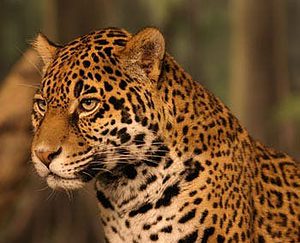As one of the largest countries in the world, Brazil is home to one of the most diverse ecosystems in the world. At the same time, however, it also boosts a number of unique species currently threatened with extinction. Recently, scientists have embarked on a quest to clone wild animal species under threat of obliteration in attempt to aid in conservation efforts.

The project is being undertaken by the Brasilia Zoological Garden in partnership with the Brazilian government’s agricultural research agency, EMBRAPA, and is now in its second phase. The first phase lasted two years and consisted of gathering genetic material from each targeted species.
So far, the Brazilian scientists have gathered over 420 germplasm samples from dead wild specimens. Eight animals have been chosen for the initiative, including the maned wolf (Chrysocyon brachyurus), the jaguar (Panthera onca) and the black lion tamarin (Leontopithecus chrysopygus) – all listed as critically endangered. Now, the researchers are ready for the actual cloning process.
Brazil cloned its first animal in 2001, a calf named Vitória, which went on to live until 2011. Since then more than 11 animals, mostly dogs and cattle, have been cloned, but no wild animals so far. Giving the lack of experience, it’s yet difficult to foresee how long will take for the project to finish.
The researchers note that their goal is not that of replenishing the wild with cloned specimens. Given as their clones in the first place, their contribution to genetic diversity is zero and might actually do more harm than good. Their main intention is that of replacing zoo specimens. Cloned animals would only be released in extreme cases, said EMBRAPA researcher Carlos Frederico Martins.
“If a certain species was in a state of drastic decline, at risk of total extinction, and it was possible to provide reinforcement, we will have the capacity,” Juciara Pelles, the head of conservation and research at the Brasilia Zoo, told Tierramérica.
“We are still in the phase of developing the technology, so we still don’t know if it will be possible to rescue a population in the wild, but we could potentially make it viable again,” she added.


